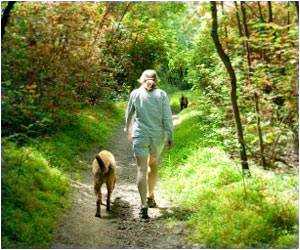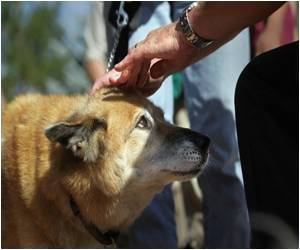Educating kids on how to interact carefully with dogs is available as a software program designed to teach worthy lessons, claimed a new study.

According to David Schwebel from the University of Alabama, part of the problem is that kids are active and unpredictable, and can stress out dogs. But another dog-bite risk is an issue of child development.
Before the age of 4 or so, children don't understand that other people and animals have thoughts and desires different from their own. So when a child sees a sleeping dog and wants to pull its ears, that kid can't comprehend that the dog might not be in the mood for ear-pulling.
To try to teach kids how to properly interact with their pets, the nonprofit organization The Blue Dog Trust developed an interactive computer game called 'The Blue Dog'.
The game sets up animated scenarios where kids can choose whether to play with a dog that is napping, eating or otherwise indisposed. If the kids make the unsafe choice, sneaking up on a dog during dinnertime, for example, the dog will growl and bark.
Schwebel and his colleagues wanted to find out if the program really worked. They recruited 76 3- to 5-year-old kids from Birmingham, Ala., and Guelph, Ontario, alerting parents to their study via churches and schools. All of the children had pet dogs, as the software is designed to teach kids how to play with their own family pets.
Advertisement
In the next tasks, they acted out make-believe scenes with the children using a dollhouse and dolls. The children were then asked to play out what they think should happen next.
Advertisement
Those three tasks gave the researchers a score for how much each child already knew about dog safety and how well they put their knowledge into practice.
After the tasks, the kids and their parents went home with a copy of one of two education software discs - 'The Blue Dog' or 'The Great Escape', a fire-safety program. Both groups were told to use the software frequently.
After three weeks, the kids returned to the lab to complete the same three dog-safety tasks again. The research turned up "mixed news" for kids who played the dog-safety computer game, Schwebel said.
"What we found is that children did learn. ... They did better on the pictures," he said.
"They actually recognized when you should pet a dog and when you should not pet a dog," he said.
But when put into a room with a real dog, those lessons went out the window. In fact, all the kids got bolder in interacting with the dog, regardless of which computer game they'd played, possibly because nothing bad had happened the first time they played with a dog in the psychology lab.
The study has been published in the Journal of Pediatric Psychology.
Source-ANI









